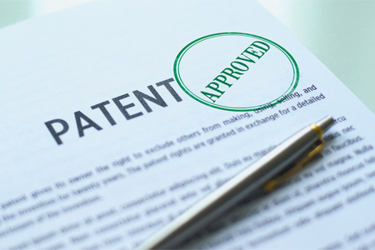Duty Of Disclosure Considerations For Medical Device Patent Applicants With Parallel FDA Submissions
By Meggan F. Duffy and Ria Patel, Marshall Gerstein & Borun LLP

Bringing a new medical device to market is a complex dance that often involves navigating both patent law and regulatory approval. Innovators may find themselves juggling these two worlds: filing patent applications while simultaneously submitting information to the FDA. While these processes serve different purposes, they are intertwined in ways that can significantly impact an invention’s patentability and enforceability. Understanding the subtle but crucial overlaps between FDA disclosures and patent law is important for anyone seeking to innovate responsibly and protect their intellectual property.
At the heart of this intersection lies the concept of the “duty of disclosure.” Under 37 CFR § 1.56, patent applicants — and anyone involved in the patent application’s prosecution — must disclose all information that is “material to patentability.” This duty does not end once the application is filed; rather, the duty persists throughout the pendency of the patent application. What qualifies as “material” hinges on whether the information could establish a prima facie case of unpatentability — meaning it could challenge and/or affect the patentability of a claim — or if the information conflicts with positions taken by the applicant to argue patentability or oppose challenges, for example.
Failure to comply with the duty of disclosure can lead to accusations of fraud or inequitable conduct, resulting in a patent’s unenforceability. The stakes are high, especially in the competitive realm of medical devices, where securing patent rights is often pivotal to commercial success. This duty extends beyond just the act of disclosure. In 2022, the United States Patent and Trademark Office (USPTO) issued new guidelines emphasizing a “duty of reasonable inquiry.” This addition stresses that applicants should also actively seek out relevant information that may be material to patentability. This may include reviewing documents submitted to or received from other agencies, particularly the FDA.
For medical device companies, the guidelines highlight a critical consideration: statements and data shared during FDA proceedings, such as a 510(k) premarket notification, may contain material information relevant to patentability. The 510(k) premarket notification process itself involves demonstrating that a new device is “substantially equivalent” to a predicate device already on the market. To do this, applicants submit detailed descriptions, comparisons, and technical data. These disclosures, especially if they reveal limitations, testing results, or technological features, could be material to the patentability of a claim in a parallel pending patent application. Therefore, it is important that such information is carefully reviewed and, if needed, properly disclosed to the USPTO via an Information Disclosure Statement (IDS).
The 510(k) pathway is typical in medical device regulation because it focuses on demonstrating equivalence, for example. If the new device shares the same intended use and technological characteristics with the predicate device, it is considered substantially equivalent. If not, the applicant must show that it is as safe and effective as legally marketed devices. Importantly, disclosures made during this process — about testing results, comparative analyses, or specific device features — may also be material to the patentability of a claim or claims in a related patent application. Such information should also be reviewed (and possibly cited in the IDS) to meet the ongoing duty of disclosure throughout the pendency of the patent application. Failure to do so could jeopardize the patent’s enforcement rights later.
To avoid pitfalls, below are some suggested best practices for patent applicants involved in concurrent FDA and U.S. patent application proceedings:
- Review FDA Filings: Diligently examine FDA submissions for references to prior art, technical details, and/or predicate devices that may be material to patentability.
- Assess Materiality: Evaluate whether the disclosed information is material to patentability, e.g., could the information challenge patent claims or contradict patentability positions taken during prosecution?
- Include Disclosures in the IDS: Timely submit information determined to be material, such as journal articles, patents, or FDA documents, ideally before the first office action, if possible.
- Monitor Communications: Monitor the pending related FDA submissions for any subsequent FDA questions, requests, or references that might influence patentability and may need to be assessed for materiality.
- Ensure Consistency: Cross-check patentability arguments made during prosecution with statements and data provided during FDA submissions to prevent conflicting positions.
In conclusion, the path to securing a patent for a medical device requires a proactive, disciplined approach to uncovering and disclosing all material information, including that which emerges during FDA proceedings, to meet the duty of disclosure. Neglecting this duty can have severe repercussions, including the potential to render a patent unenforceable. The prudent course is to adopt a comprehensive approach: review all relevant documents, disclose material findings, and maintain consistency across filings.
 About The Authors:
About The Authors:
Meggan F. Duffy is a partner, patent attorney, and chair of the Medical Devices Practice Group at Marshall, Gerstein & Borun LLP, Chicago’s largest intellectual property boutique firm. Reach Meggan at mduffy@marshallip.com.
Ria Patel was a summer associate at the firm and is currently a law student at Duke University.
DISCLAIMER: The information contained in this article is for informational purposes only and is not legal advice or a substitute for obtaining legal advice from an attorney. Views expressed are those of the author and are not to be attributed to Marshall, Gerstein & Borun LLP or any of its former, present, or future clients.
